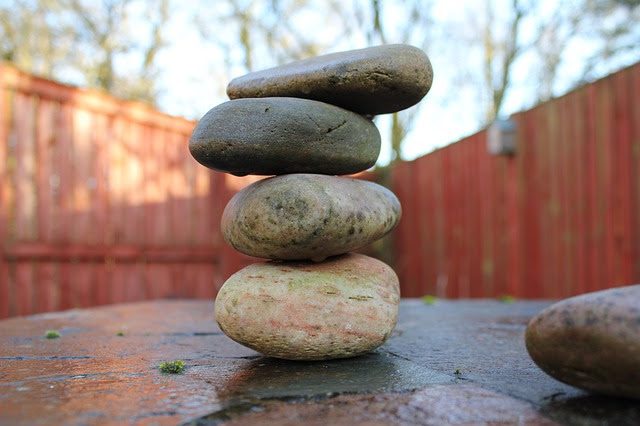
High Carb? Low Carb? No Carb? Help!
If you are just joining us, we are working our way through some material on the Paleo Lifestyle. You can check out some of the previous posts here. As you may recall, the Paleo Movement started out primarily as an approach to eating more like humans have historically (and potentially pre-historically) than how we have been eating over the last hundred years or so. Recently, the Paleo Movement has also incorporated exercise, sleep, electronics, and even social interactions. Currently, we are finishing up the section on food. Today, we are going to be covering carbohydrates. Before we talk about the Paleo approach to carbohydrates, let's take a minute and talk about exactly what a carbohydrate is!

What is a Carbohydrate?
While a protein can be used for energy production in the human body, it is not very efficient and way more important as a building block. Fat is a highly efficient form of energy, but takes a little while to get burning. Fat also has some very important roles in hormone and cell production. Carbohydrates, on the other hand, are an energy source that burns fast and hot! They don't take much to get going, but they burn out quick. Carbohydrates also convert to fat in the body, if they are eaten in greater amounts than the body needs. Sources of dietary carbohydrates include:
- Fruit
- Vegetables
- Grains
- Legumes (Beans)
Carbohydrates in our diet can be either refined or unrefined. Refined refers to how much of the "wrapping" around the carbohydrate has been removed. For instance, if you took an orange and squeezed it for the juice, a high percentage of what you got would actually be pure carbohydrate. If you took that same orange and ate the whole thing, you would get the same amount of juice, plus a lot of fiber.

When You Consume Too Many Carbohydrates in Your Diet
The problem with consuming too many carbohydrates in your diet (and refined carbohydrates, for sure) can be summed up in two words: Insulin Resistance. Insulin is a hormone produced by your pancreas to help get carbohydrates into cells and to help convert excess carbohydrates into stored fat. If a diet is too high in carbohydrates (especially refined ones), then the insulin system works overtime. Do this for too long and it starts to become less efficient, and it will eventually stop working altogether, which results in Type II Diabetes! Diabetes itself is associated with a variety of health issues, including heart disease, eye issues, and numbness and tingling in the hands and feet.

What Do Paleos Do?
The "Go Paleo: Step-By-Step Guide that we have been following from Paleo Magazine emphasizes getting the majority of your carbohydrates from vegetables, then more sparingly from fruit, as it has a higher concentration of sugar (fructose). It is recommend to stay away from grains and legumes. Grains have several issues: they are higher in carbohydrate compared to fruits and vegetables and, therefore, can raise your blood sugar more quickly. In addition, the primary grain we use in the US is wheat. Wheat has a protein in it called gluten. Gluten can have negative effects on both the gut and nerve system in a lot of people. Legumes (beans) are composed of a material that requires a specific enzyme to break it down for digestion. Most people don't have that enzyme, hence that famous song: "Beans, beans the magical fruit..." The Paleo approach emphasizes getting your carbohydrates first from eating a lot of dark green leafy vegetables (like spinach), then incorporating vegetables and fruit from a variety of colors. Each color can add different nutrients. It is recommended to limit starchy vegetables, like potatoes and corn, as they have a high percentage of carbohydrate to weight.

What Do You Do, Doc?
Like I have said in previous posts, I try hard to follow the 85/15 rule: Eat right at least 85% of the time and don't worry the other 15%! Here is what I typically do:
- Most days, we try not to have any carbohydrates (fruit or vegetable) prior to lunch time. We do this by having either bacon, eggs and coffee, or turmeric tea with coconut cream for breakfast. Then, we try not to eat before noon. This gives the insulin system a long break from bedtime till lunchtime (for us, about 12-13 hours).
- For lunch, I try to have a salad of salmon, carrots, celery, spinach, flax meal, and avocado, along with an apple and pear, and some nuts and M&M's for dessert.
- Most dinners are a vegetable and meat, but we do eat chili, burritos, and hamburger rolls with gluten-free flour (dinner would be our highest concentration of carbohydrates).
- When we bake, it is with 1/3 gluten-free flour, 1/3 almond flour and 1/3 flax/chia mix. The almond flour and flax/chia mix are actually very high in fat and low in carbohydrates. We usually make banana bread and M&M cookies this way, minus half the recommended sugar.
- Our biggest indulgence are frappuccinos (this probably makes up most of the 15%)!
- We rarely buy chips, crackers, or cereal.
- You will see us at restaurants, mostly Chipotle and McAllisters, and that is another place we cheat a little.
- Pop is rare; carbonated flavored water is the norm.
Again, 85/15 is the goal. I hope this gives you a little better an understanding of how carbohydrates work and why it is important to chose them carefully. Remember, you don't have to be perfect or finish first to have a successful race, but it is a good idea to be heading in the right direction! Next week, we will wrap up the eating portion of this series with a Quick Tips and Help Sheet!
Yours in Health,
Doug Williams, D.C.
Care Chiropractic
Lafayette, Indiana